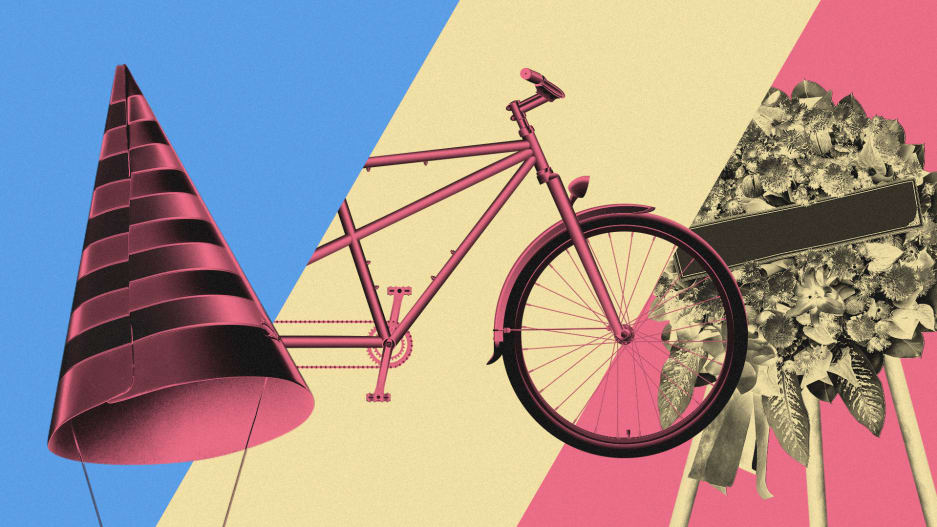
From fixathons to wake parties.
Creativity and innovation happen when people break the script and make non-obvious connections. Rituals can provide a structure for people to switch to a creative mind-set and push the boundaries of the ordinary. They can also help teams develop a culture of experimentation. Here are five unexpected rituals excerpted from our new book, Rituals for Work: 50 Ways to Create Engagement, Shared Purpose, and a Culture of Bottom-Up Innovation (Wiley, 2019).

THE IDEA PARTY
An Idea Party is a way to celebrate the end of a workshop or other hands-on session, and to loop the rest of your organization into the creative work through a lightweight event. The Idea Party is an event that should happen right after a creative session, in which the work product from the session is laid out like a gallery. Ideas and insights are displayed on big foam boards or walls. Others are invited to mingle and tour around with drinks and snacks. They can ask questions, leave comments, and then rank which should move forward. This ritual is meant to recognize the hard work of the team, and then build on others’ expertise to refine their creative work before moving forward.
The Use Case: When you want to celebrate a team’s creative sprint, and also get more people’s input on what should move forward.
Props: Everyone in an organization should be invited to the party, and the team members can be the hosts to present their work.
The Difficulty Level: This is a medium-cost, medium-planning ritual. Some initial prep is needed to organize the event and the visuals.
How It Works
Have you ever been through a very thorough and engaging project workshop– but you’ve struggled to have the rest of the organization appreciate the work? The Idea Party is an alternative to slide presentations, reports, or email summaries about creative work. It’s a cross of a cocktail party, a museum experience, and a pitch competition.
- Once a creative session concludes, each team is responsible for making their work into a poster to include in the gallery.
- The whole organization (and outsiders, too) are invited for an hour of snacks, drinks, and ideas.
- The facilitator kicks off the party with a salute to the team’s hard work, and the goals of the session.
- Then the facilitator announces the surprise: The poster with the most votes gets a special prize.
- Let everyone mingle easily–and then with 10 minutes left, announce that votes must be submitted.
- Count the votes, and the team with the highest votes get a prize–a basket of gifts, funding for the project, or otherwise.
- Make sure posters live longer than the party to increase exposure and impact. They can be hung in the halls, until the next Idea Party.
How To Adapt
Some companies do concept posters in a unique way. For example, Amazon has teams create a “Cover Story at the Start,” in which the ideas at early stages are made into front-page magazine covers. This is to help build excitement and clarity around rough ideas. An Idea Party’s posters might be done as magazine covers like this.
Flipboard holds Mock O’Clock, a regular share-out of prototypes and concepts, like a show-and-tell for a company. This is a way to share ideas in a low-key and interactive way. A Mock O’Clock doesn’t require the budget of a party, and it makes the social sharing of ideas more of regular occurrence in a company.
The Idea Party ritual can also be adapted into meetings where people are tired of sitting through slide presentations. Instead of holding a slide presentation around a boardroom table, have all presenters create stations for their materials on foam board stations. Then participants can tour around the ideas, talk them through, and take them in at their own pace. This makes for a more immersive and social sharing of ideas–and hopefully prevents people from tuning out from good ideas because they’re burned out from sitting through slide presentations.
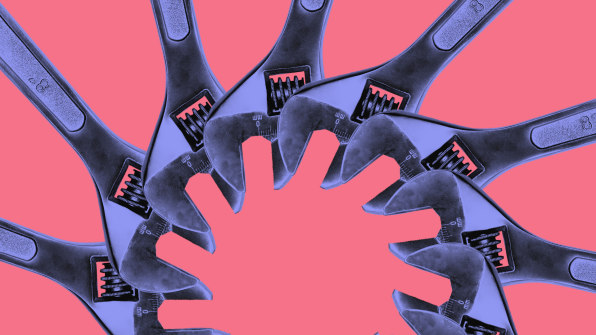
THE FIXATHON
When an organization has been talking around a problem for a long time, a Fixathon is a ritual event to force people to focus on getting this problem solved. It takes the intensity of a hackathon–relentless work in a concentrated sprint–and directs it to a specific innovation that needs to happen.
In a Fixathon, a whole organization comes together and works until the problem is addressed. People from across functions work together, and everyone is focused on the same task at once–to remove the usual barriers of logistic, space, and function that slow work down. The event is run strictly around time–to build pressure and dedication among everyone to get the problem solved.
The Use Case: When there is a recurring problem with the product or service offering that needs attention.
Props: Pen, paper, stickies, food, awards.
The Difficulty Level: This is a medium-cost and medium-planning ritual–it needs coordination between teams and sponsorship for the food and logistics.
How It Works
Choose a clear, necessary problem to be solved at the Fixathon. The organizers can poll people beforehand about what problem or innovation to focus on. If the organization is large, a handful of goals are set. For example, a Fixathon could be about helping an under-performing product team, addressing a recurring complaint from customers, or giving pro bono help to a nonprofit.
Everyone in the organization is informed of the date, the timing, and the purpose of the Fixathon. They can prep beforehand, to make sure that they know the challenges and what skills they can bring to solving it. Everyone in the organization has to clear their schedules–the Fixathon is mandatory and should be the sole priority of everyone.
On the day of the Fixathon, the facilitator can help form teams and introduce people who don’t normally work together. They will also set the timer, and keep all the teams on track–with checkpoints, share-outs, and planning on how to get the tasks done in the remaining time.
The event should have lots of food, drinks, and space to spread out. There can be breaks to exercise, play games, and review others’ work. People are allowed to leave, but the facilitators should encourage everyone to be fully present and on topic.
As the Fixathon nears the end, the facilitators should start a countdown, to build the event to a climax.
At the end, all the teams share what they’ve done. Ideally, there is a celebration to commemorate that the problem has been solved.
How To Adapt
The same methods of a Fixathon can be used for more divergent purposes–to have people throughout an organization develop new, different ideas in a concentrated way.
Facebook regularly runs Hackathons, in which teams have 24 hours to work on something they don’t normally work on day-to-day. Anyone, from an intern to a senior employee can form a team to create something new. Teams present to executives, showing off their prototypes for the chance to get their development put into the main pipeline of projects.
Flipboard, the Palo Alto, California, technology company, organizes an annual event called the Mockathon. It’s part of their internship program. In this case, each of the teams can choose a project to work on in a concentrated way. It’s less about fixing a large companywide problem, and more about working on something important in small teams.
The event is one of the last things Flipboard interns do before going back to school–and it’s meant to be a big, memorable experience. Everyone can choose team names, create a mantra, and bond together in their groups as they work crazy hours to develop new things together. In their case, people camp out with sleeping bags and tents, working for almost 24 hours and not leaving the office. Facilitators patrol the teams with megaphones reminding them of the countdown, and encouraging their progress. At the end, there are two-minute share-outs–and the winning teams get money and awards.
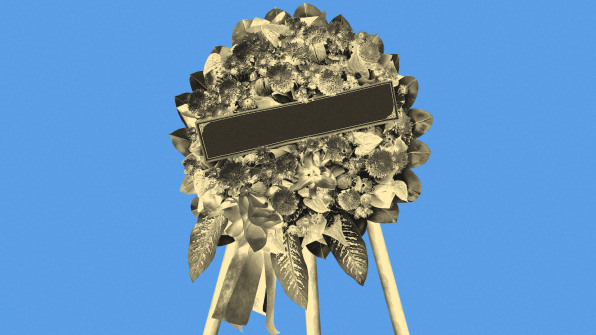
THE FAILURE WAKE PARTY
The Failure Wake Party is to celebrate the failure of an experiment. It should encourage the team to take risks and to have a closure. Team members get together around food and music. Leaders can say a few words about what’s happened, thank all the team members, and remind them that it’s okay to fail–that they’re encouraged to experiment. This ritual has been used by a pharmaceutical company to keep employees engaged and motivated in an environment where a high percentage of failure is normal.
It is set up like a wake, a party after a death, with food, music, and community. Team members can use this event to process what’s happened, and the leadership can use it to reinforce core values of the organization.
The Use Case: When the team failed after an experiment.
Props: Visualize the project and its steps with a poster. Prepare desserts to lighten the mood.
The Difficulty Level: This is a medium-level ritual. Organizers will have to arrange a space, food, drink, and light presentations from the team.
How It Works
The Failure Wake Party happens when a project has failed in a major way. This could be when a new code change takes down an entire website. Or when a company experiment fails to show promising results, and has to be shut down. Sometimes it can be a correctable mistake, or it can be one that fully ends a years-long endeavor.
The Failure Wake Party should be set up as an in-person event that is respectful but still joyful. All the team members who contributed to the project are invited, and they can be given a chance to speak if they like.
A team leader should prepare remarks like a eulogy, recognizing the life cycle of the project and expressing appreciation for everyone’s hard work.
The leader should also signal in their remarks that, despite the failure, the team members should keep working on risky, ambitious experiments–that this failure is not shameful, and should not discourage more innovation work.
The pharmaceutical company Roche throws champagne lunch parties for their teams after a promising compound fails in testing. Their goal is to sustain teams’ creativity and dedication to innovation, even when failures happen. The celebration helps people get a sense of closure for a project, and give leadership a chance to show support and appreciation. Ideally, the Failure Wake Party will keep employees engaged, even while working in an industry with a high rate of failed projects.
The Failure Wake Party can be adapted to quicker failure celebrations. For example, if a small failure happens, the team can have a failure celebration moment–to cheer, to eat a special candy, or to pass around a gift–that reaffirms to employees that it is okay to fail if they do so when experimenting on making things better.
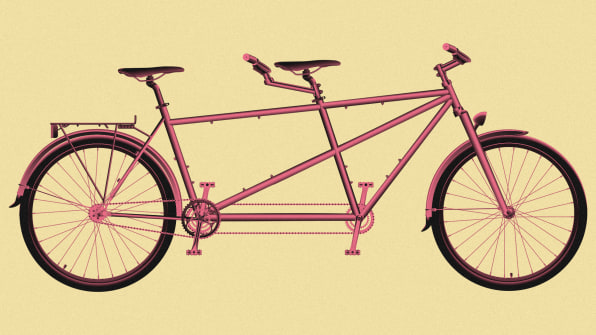
THE SURPRISE RIDE ALONG
The Surprise Ride Along is a way to disrupt a project, with leaders whisked away from offices and boardrooms and into the field. They are challenged to set aside their preconceived plans and spend the day listening, watching, and observing the people the project is meant to benefit. It’s a ritual that’s about radical empathy and finding new paths for creativity.
The organizers should arrange the Ride Along like a surprise party–the team members shouldn’t know it’s coming, and they should think that they’ll be going about work as usual. Then they’ll be told that they’re actually going to be spending the day shadowing a customer or serving as front-line staff.
The Ride Along has both a symbolic and functional purpose. The act of spending the day listening and observing should reinforce the value of empathy. And the face-to-face experience can catalyze better work by focusing leaders on specific problems and empathetic understanding of others’ experiences.
The Use Case: When you need to charge leaders with more empathy with the users, and find sparks for innovation.
Props: Travel route, messaging app.
The Difficulty Level: This is a high-cost and high-planning ritual, that takes coordination and a budget to arrange.
How It Works
The Ride Along demands a great degree of planning, just like a surprise party. The facilitator needs to arrange a decoy event for team members to attend, and then surprise them on the day with a pre-planned field trip. This can be with a pre-selected worker or customer, or it can be in playing the role of a worker or customer in a specific setting.
The team members should not be told too much of where they are going, and they also shouldn’t be given a specific “task” to accomplish during their Ride Along. The point is to be surprised, to go with whatever happens, and to take in all of the details in order to make sense of them later. It’s a guerrilla event, that should be unstructured–with the team members having to adjust to the field context rather than the other way around.
The Ride Along should end with a “thank you” to all the people who were shadowed, with small gifts for them to show appreciation for opening their lives to the team. The team can then do a debrief on their way back to the office–drawing sketches, writing down insights, and preserving the spirit of the day to fuel future work.
How To Adapt
There are many different versions of this ritual. In one instance, a CEO of the company flew his executive team with his private jet to meet a customer who is struggling with the service. The executives had to speak and work directly with this customer, to see the service from her perspective and interact directly with her (rather than talk about general customers in the abstract).
In another instance, HACEB‘s CEO made it mandatory for the executive team to ride with the product delivery personnel (truck drivers) in the company and experience their struggles firsthand. This was to give leaders a view from a completely different perspective.
In Zappos, a Ride Along version is part of all new employees’ training. When new people start at the company, they spend the first weeks on the front lines of customer service, answering calls from customers. This gives all new employees a strong empathetic experience, to see what customers need and want–no matter what job they are going to, they need to be directly in touch with the customer and their coworkers.
Ride Alongs might already happen in a company–with designers and researchers in a team going out in the field with an empathetic mind-set. This surprise ritual gets people from throughout the organization to understand how each other works, and how their work is impacting customers and users. It can reinforce people’s sense of purpose and can inspire new directions for innovation.

THE SKILLSHARE FEST
The SkillShare Fest is a day off from the normal work routine, where team members share their maker skills with each other in a festive environment. Everyone can teach the rest of their team how to cook a certain dish, build something, perform a dance, make a craft, or some other skill that they’ve developed. It’s structured like an “unconference” where individuals can set the agenda by proposing sessions they’d like to offer, or those they’d like to attend.
The company Pinterest developed this ritual, around one of their core values of knitting. They run a Knit Con that lets all of the employees share projects and skills they’ve developed, so people can learn from each other and create new things. It’s a way to encourage employees to bring their whole self to work, and find hidden connections with each other–appreciating the talents they don’t usually get to share at work.
The Use Case: When you need to bring out people’s creative leadership.
Props: Schedule, materials for activities, appreciation, or recognition props for the instructors.
The Difficulty Level: This is a high-planning, medium-cost event. You need to create time and resources for a day event, along with recognition materials.
How It Works
Pinterest’s design team created their own Knit Con with inspiration from other skill-sharing unconference events, where developers, designers, teachers, and journalists share their knowledge and strategies with each other in decentralized events. They created a basic infrastructure for the event, and then had the employees become the teachers to drive the schedule and content.
- Announce the SkillShare Fest, and invite all employees to be a teacher to share their secret skill with others.
- Create an online grid of times for the event day, with windows of 20 or 30 minutes. Share it with all the teachers, for them to sign up for a window.
- At the start of the day, do a warmup–like a tournament of rock-scissors-paper–to help everyone mix together and build energy for the rest of the day.
- The backdrop in the central area should have the names of all the teachers listed on it–to show appreciation and focus on them as the “heroes” of the event. All attendees also get a tote bag with the names of the teachers on it as well. And all teachers get an appreciation gift for leading a session.
- Mix the day’s events with teach events, mixers, and food.
- Allow other pop-up events (like a board game tournament) to emerge–the employees should set the direction.
Some example SkillShares might be how to make Boba tea, how to perform ballet moves, watercolor 101, making salsa, doing hula dancing, or pickling vegetables. The event should let employees’ passions and talents shine–especially helping introverts take the lead in setting the agenda.
How To Adapt
At Pinterest, their skill-sharing event Knit Con has happened for several years–growing each time to thousands of employees participating. It was an unusual type of event to run, because the organizers had to give up a lot of control to the employees. But with a basic, quiet structure at the backbone of the event, they were able to recruit and support teachers to lead the sessions. Participa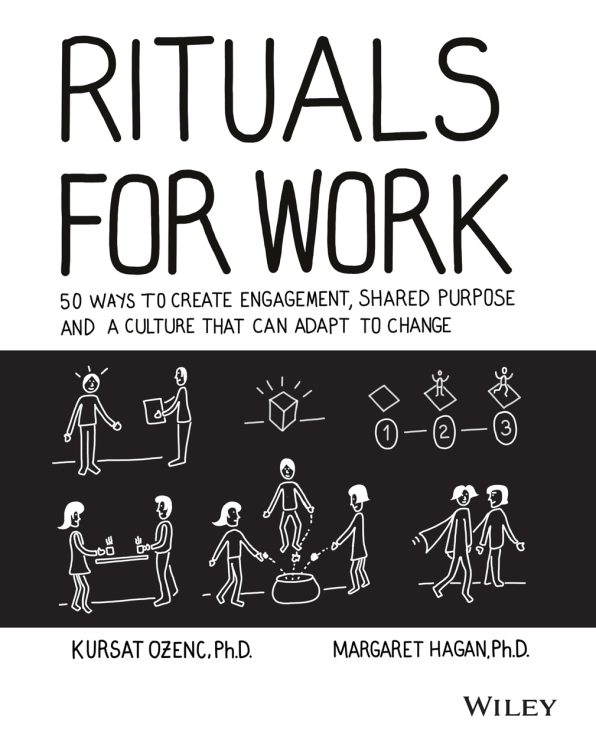 nts ended up bonding with each other in magical ways–and also discovering hidden talents that didn’t usually emerge in their usual work culture (which is not arrogant, and not bragging). It turned out fellow employees were former ballerinas and athletes, skilled outdoorsmen and women, and great cooks and artists.
nts ended up bonding with each other in magical ways–and also discovering hidden talents that didn’t usually emerge in their usual work culture (which is not arrogant, and not bragging). It turned out fellow employees were former ballerinas and athletes, skilled outdoorsmen and women, and great cooks and artists.
Participants rated the event with incredibly positive reactions–never going below 95% approval. Especially as the company itself grew, the event helped to keep the culture strong and scale up the central ethos of the company. For many people, it was like Pinterest in real life, with people sharing their hobbies, trying new ideas, and appreciating each others’ skills.
Other companies might adapt the daylong SkillShare festival to a smaller workshop, where people go around and quickly share a talent and teach it to the other attendees.A key point for adaptation is to make the people sharing their skills into the heroes–spotlighting them, their contributions, and showing appreciation for them.
–
This article first appeared in www.fastcompany.com
Guest Author: Kürşat Özenç is a designer and an innovation consultant. He teaches at the Stanford d.school, where he leads the Ritual Design Lab initiative, that runs experiments with students and partner organizations on personal, team, and human-robot rituals. Margaret Hagan is a lawyer and designer. She teaches at Stanford Law School and d.school, where she runs the Legal Design Lab, which does research and development for improving people’s access to the justice system.
